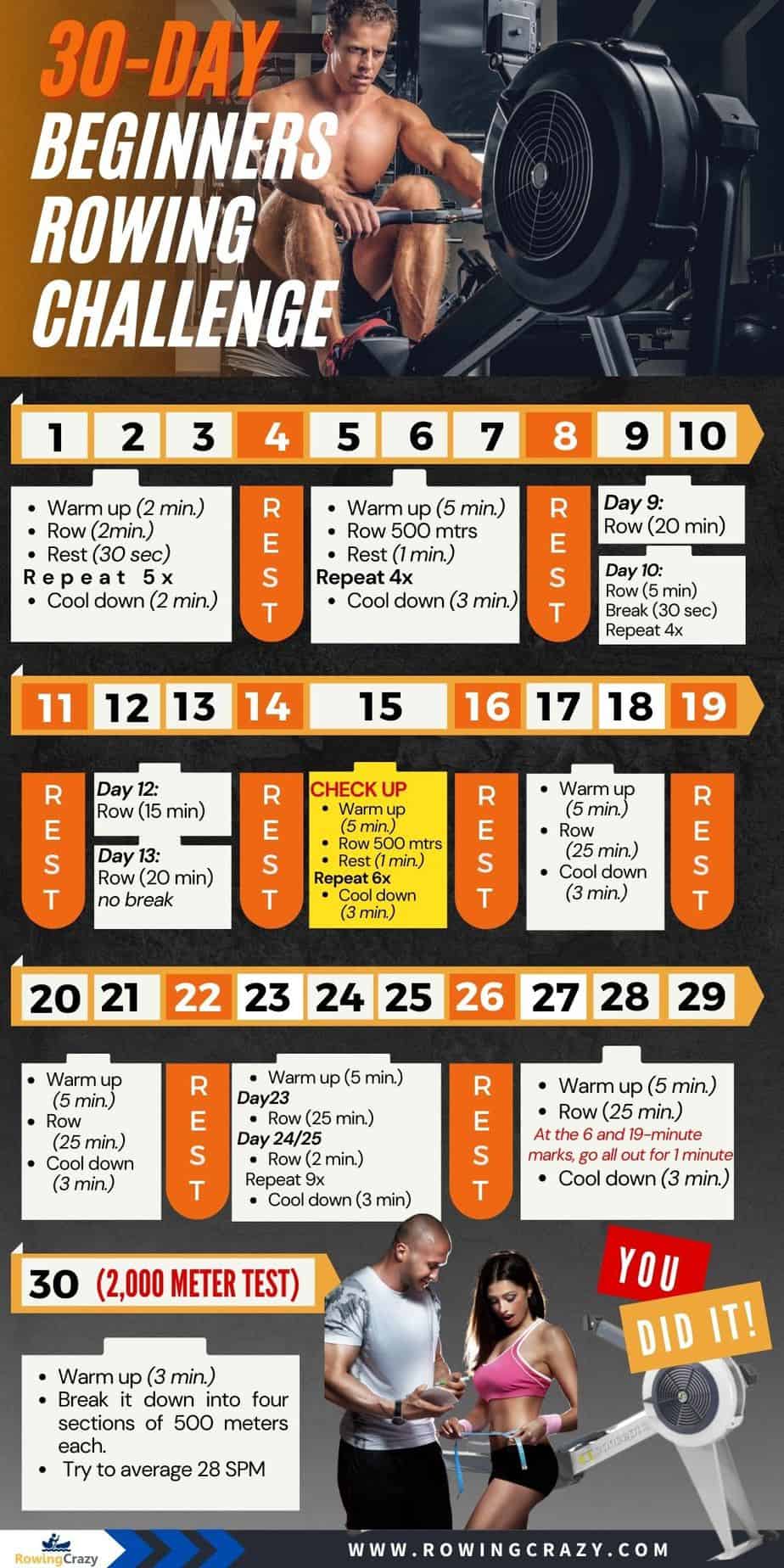
Rowing Training Plan for Beginners: A Comprehensive Guide
Rowing, often hailed as one of the most complete and effective forms of cardiovascular exercise, offers a full-body workout that strengthens muscles, improves endurance, and boosts cardiovascular health. However, the seemingly simple act of pulling an oar requires proper technique and a well-structured training plan, especially for beginners. This comprehensive guide provides a detailed plan to help you safely and effectively begin your rowing journey.
Understanding the Fundamentals: Before You Begin
Before diving into a training regimen, understanding the basics of rowing technique and equipment is crucial. Incorrect form can lead to injuries and hinder progress. Here’s what you should consider:
-
Ergometer (Erg) vs. On-Water Rowing: Beginners often start on an ergometer, a stationary rowing machine that simulates the on-water experience. Ergs provide consistent resistance and allow for focused technique development. Transitioning to on-water rowing should be done under the guidance of a coach or experienced rower.
-
Proper Technique: Learning correct rowing technique is paramount. This involves a coordinated sequence of movements: the catch, the drive, the finish, and the recovery. Numerous online resources, videos, and coaching sessions can help you master this technique. Focus on smooth, controlled movements to avoid strain and injury.
-
Understanding Workout Terminology: Familiarize yourself with common rowing terms like strokes per minute (SPM), distance, and watts (a measure of power output on an erg).
Phase 1: Building a Foundation (Weeks 1-4)
This initial phase focuses on building a base level of fitness and mastering fundamental rowing technique. The emphasis is on low-intensity, steady-state rowing to build endurance and avoid overtraining.
-
Frequency: 2-3 sessions per week, allowing for rest days between workouts.
-
Duration: Each session should last approximately 30-45 minutes.
-
Intensity: Focus on a low to moderate intensity, aiming for a comfortable pace where you can hold a conversation. On the erg, you might aim for a heart rate between 60-70% of your maximum heart rate (MHR). You can estimate your MHR by subtracting your age from 220.
-
Workout Structure:
- Warm-up (5-10 minutes): Light rowing at a very low intensity, followed by dynamic stretches targeting major muscle groups (legs, back, shoulders).
- Main Set (20-30 minutes): Steady-state rowing at a consistent pace. You can break this into intervals of 5-10 minutes with short rest periods (1-2 minutes) in between.
- Cool-down (5-10 minutes): Light rowing at a very low intensity, followed by static stretches holding each stretch for 30 seconds.
-
Example Workout:
- Warm-up: 5 minutes at low intensity
- Main Set: 10 minutes at moderate intensity, 1 minute rest, 10 minutes at moderate intensity
- Cool-down: 5 minutes at low intensity
Phase 2: Increasing Intensity and Duration (Weeks 5-8)
Once you’ve established a base level of fitness, you can start to increase the intensity and duration of your workouts. This phase introduces interval training to improve speed and power.
-
Frequency: 3-4 sessions per week.
-
Duration: Increase session duration to 45-60 minutes.
-
Intensity: Gradually increase intensity, incorporating higher-intensity intervals. Aim for heart rate zones between 70-80% MHR during intervals.
-
Workout Structure:
- Warm-up (5-10 minutes): Similar to Phase 1.
- Main Set (30-45 minutes): Introduce interval training. This could involve alternating high-intensity intervals (e.g., 2 minutes at high intensity) with low-intensity recovery periods (e.g., 2 minutes at low intensity).
- Cool-down (5-10 minutes): Similar to Phase 1.
-
Example Workout:
- Warm-up: 5 minutes at low intensity
- Main Set: 4 x (2 minutes high intensity, 2 minutes low intensity)
- Cool-down: 5 minutes at low intensity
Phase 3: Strength and Power Development (Weeks 9-12)
This phase focuses on building strength and power. You’ll incorporate strength training exercises to complement your rowing workouts.
-
Frequency: 3-4 rowing sessions per week, plus 2 strength training sessions.
-
Duration: Rowing sessions remain around 45-60 minutes. Strength training sessions should be approximately 30-45 minutes.
-
Intensity: Continue with interval training, focusing on shorter, higher-intensity intervals. Strength training should focus on compound exercises targeting major muscle groups involved in rowing.
-
Workout Structure:
- Rowing: Similar to Phase 2, but with a focus on shorter, more intense intervals.
- Strength Training: Include exercises such as squats, deadlifts, lunges, push-ups, and rows. Focus on proper form and gradually increase weight or resistance.
-
Example Workout:
- Rowing: Warm-up, 6 x (1 minute high intensity, 1 minute low intensity), Cool-down
- Strength Training: Squats (3 sets of 8-12 reps), Deadlifts (3 sets of 5-8 reps), Lunges (3 sets of 10-12 reps per leg), Push-ups (3 sets to failure), Bent-over rows (3 sets of 8-12 reps)
Phase 4: Maintaining and Progressing (Weeks 13 onwards)
This phase focuses on maintaining your fitness level and continuing to improve your performance. Continue to incorporate a variety of workouts, including steady-state rowing, interval training, and strength training. Consider joining a rowing club or participating in local races to stay motivated and challenge yourself. Regularly assess your progress and adjust your training plan accordingly. Listen to your body and take rest days when needed to prevent overtraining and injuries.
Important Considerations:
-
Proper Nutrition and Hydration: Fuel your body with a balanced diet rich in carbohydrates, protein, and healthy fats. Stay well-hydrated throughout your training.
-
Rest and Recovery: Allow for adequate rest between workouts to allow your body to recover and rebuild. Aim for 7-9 hours of sleep per night.
-
Listen to Your Body: Pay attention to your body and take rest days when needed. Don’t push yourself too hard, especially when starting.
-
Seek Professional Guidance: Consider consulting with a doctor or physical therapist before starting any new exercise program. Working with a rowing coach can significantly improve your technique and prevent injuries.
This comprehensive plan provides a structured approach to beginning your rowing journey. Remember consistency and proper technique are key to achieving your goals. Enjoy the process and the rewarding experience of rowing!



